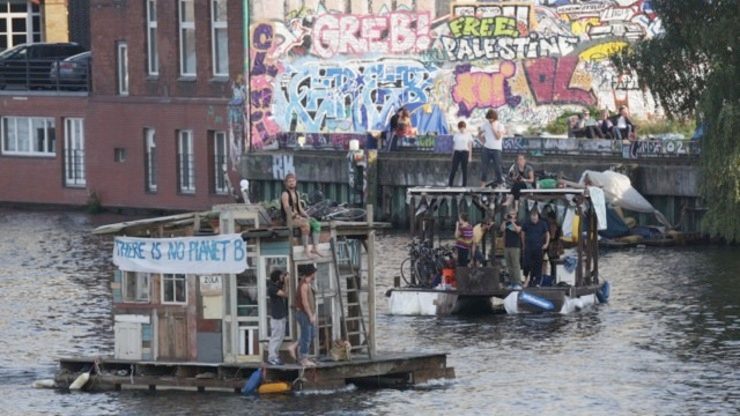SUMMARY
This is AI generated summarization, which may have errors. For context, always refer to the full article.

PARIS, France – Five years ago, the environment movement was in its heyday as politicians, actors, rock stars, and protestors demanded a looming United Nations summit brake the juggernaut of climate change.
Then came crushing disappointment.
Over-burdened with demands, its draft agreement a minefield of discord, the ballyhooed Copenhagen summit of December 2009 turned out a flop.
Far from hammering out a historic treaty to slash greenhouse gases, nations squabbled and nitpicked for 12 solid days.
At the last minute, leaders from a few dozen big countries cobbled together a face-saving compromise – a hazy vow to limit global warming to two degrees Celsius (3.6 degrees Fahrenheit) – and activists were distraught.
Now, after a long spell in the wilderness, campaigners are looking to another UN climate summit, in New York on Tuesday, September 23, to haul their cause back to center stage.
The goal is a fresh attempt at the global pact. Based on the 2 C goal, negotiations would conclude in Paris at the end of 2015, and the deal would take effect from 2020.
“The situation today is a window of opportunity,” said Sebastien Blavier of Greenpeace France. “We are getting the machine back on line.”
“This is the right time,” said Mark Kenber of The Climate Group. “We are moving out of recession and the evidence, the science, is more certain every day.”
This Sunday, September 21 – if activists’ hopes are realized – will see 100,000 people marching on the streets of New York to demand radical climate action.
Two thousand other climate-awareness events are being scheduled around the world, including marches in Paris, Rio de Janeiro, Berlin, Melbourne, Bogota, and Delhi, according to campaign group Avaaz.
The initiative has been backed by a roster of celebrities, such as the actors Susan Sarandon, Emma Thompson, and William Shatner, musicians Peter Gabriel and Brian Eno, and soccer star Lionel Messi.
Strategic rethink
With lots of noise and a sprinkling of glitter, it all sounds like a return to the glory days.
But among many campaigners, there’s a big difference in expectation and in strategy compared with 2009. Much of the old thinking has been ditched and tactics have been pruned or reworked.
After the Copenhagen fiasco, some of the most prominent green groups began to shift much of their campaign resources away from the glamor of international diplomacy, say insiders.
Instead, they worked on building awareness at the level of cities, regions, and countries, and doing more to enlist the support of business rather than shunning it.
Underpinning this change was a hard-won awareness: a “top-down” approach is infeasible if a planetary-wide deal takes too long to reach and gives only meager results.
Other tools were needed, ranging from coaxing carbon cuts from corporations to agitating for bike lanes and better public transport in cities, went this thinking.
“Governments still play a crucial role and we will continue to push delegates to deliver on national action and an international treaty,” said Jamie Henn of 350.org, one of the most visible groups in 2009.
“But we are not waiting for them to lead. People everywhere are fighting fossil-fuel projects to prevent more emissions, as well as beginning to implement solutions that they need to see at local level,” he told Agence France-Presse.
Alden Meyer, a veteran analyst with the US group the Union of Concerned Scientists (UCS), said activists could draw from a deeper well of public awareness compared with the past.
Storms, droughts, or wildfires were now part of the daily US news diet, raising questions about what is happening to the weather system.
“In the US, there is tremendous interest and growing awareness,” he said. “People know it’s a real issue now, not something that will happen in 30 years or only affect Bangladesh.”
“There are millions of people who have directly seen the impact, are concerned and beginning to mobilise,” said Henn. “The treaty is important, but the treaty is only one part that needs to get done.” – Rappler.com
Add a comment
How does this make you feel?
There are no comments yet. Add your comment to start the conversation.